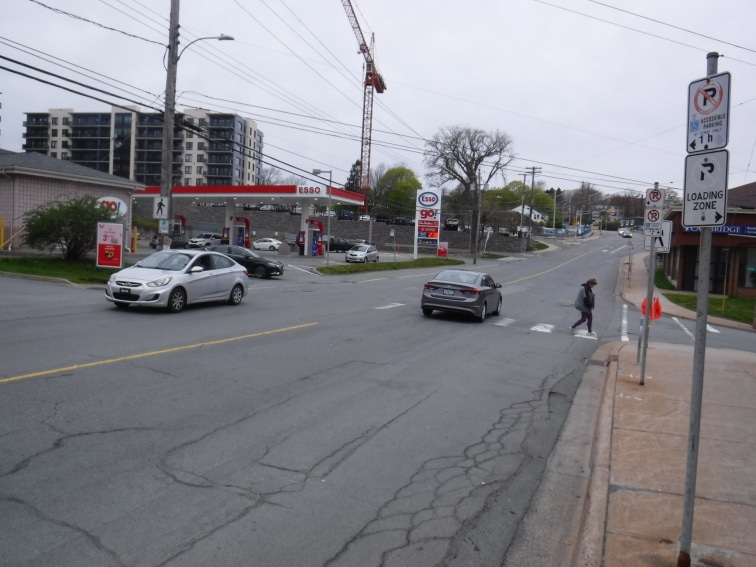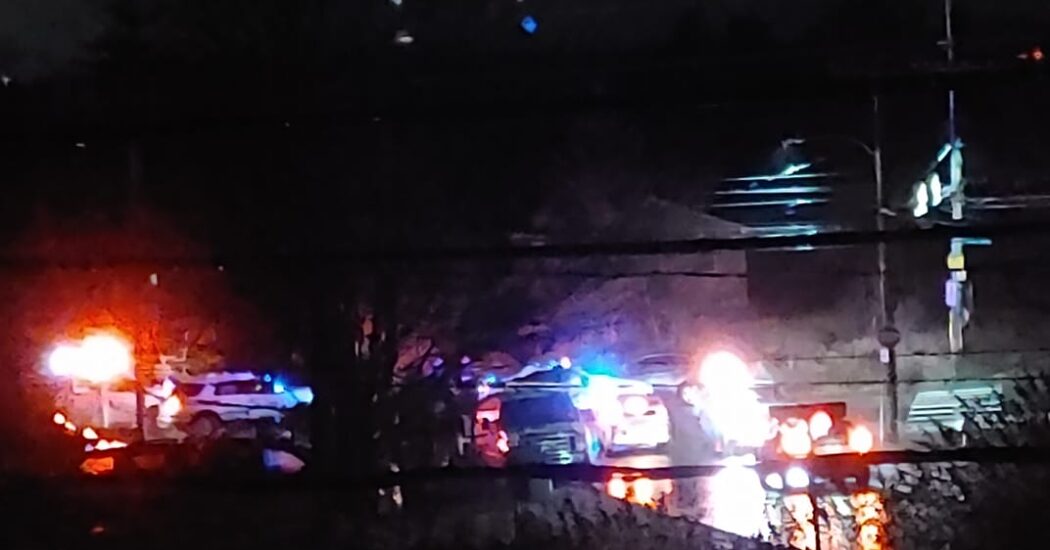
KJIPUKTUK (Halifax) – 2020 has been yet another year marked and marred by vulnerable road user fatalities, all of them seniors. No different from 2018 and 2019, when four senior pedestrians died each year within the Halifax Regional Municipality.
Also, news just before Christmas that 33 year-old mother Sarah Richardson suffered two miscarriages after she was hit while using a marked crosswalk on Herring Cove Road on December 14. Richardson’s friend Sarah Elliott confirmed the remains were cremated on 28 December.
Richardson spoke to Chronicle Herald Reporter Chris Lambie from her hospital bed about the incident. She was crossing over from Woodcrest over Herring Cove Road toward the bus stop near Roaches Pond, on a marked crosswalk. Other drivers had stopped to allow her to cross, but she does not remember what happened next, or being hit. Her interview in the article is worth reviewing in full.
The crosswalk where Richardson was hit is known by the local community to be treacherous due to a wide road, speeding drivers and no infrastructure. A crosswalk of paint and signs only is woefully inadequate at such locations and does not result in drivers consistently seeing pedestrians and yielding, as seen in a video of the crosswalk posted by local resident Lori Myatt and explained here using visual graphics, by US national road safety agencies (pages 20 to 23).

Courtney Dempsey echos the concerns of many local residents:
“I live in this area and this crosswalk is absolutely horrible!! I walk my dog to McIntosh Park and have to cross the street when I come to this crosswalk and stand to cross MANY cars drive through it while I’m standing there. Eventually someone will stop to let me cross. But you REALLY have to pay attention. I stopped taking my kids with me because it makes me so nervous.”
It’s worth considering this year’s two other crosswalk fatalities before looking at the bigger picture regarding urgent crosswalk adaptations that would prevent similar tragedies in 2021.
Dawn Nicols, aged 73

On February 18th at around 1.20pm in clear conditions Dawn Nicols was on her way to a bus stop to get to the grocery store. She had nearly completed her walk across the crosswalk on Dunbrack Street when she was hit in the fourth and final lane by a driver who said he did not see her, despite Dawn’s bright clothing and other drivers who had stopped to yield for her, as for Sarah Richardson.
Was this down to just bad driving or also a dangerous crosswalk? Undoubtedly unsafe driving was a significant factor, but regular users of four-lane crosswalks on artery roads, including this one on Dunbrack (which I have used many times) will understand that drivers not seeing you and passing through the crosswalk while you are on it is completely normal, not exceptional.
This is because the roads are built with wide and often multiple lanes to (apparent) Highway specifications, so speeds well above 50 km/h are normal. They are not adapted to meet the safety needs of people who are not in a vehicle..
It is also because the overhead lights are situated above driver sightlines, and so are often missed by drivers.
And it is because there is no infrastructure that prompts or forces drivers to stop 5 metres in advance of the crosswalk, as required by law. As a result, pedestrians crossing cannot be seen by drivers approaching the crosswalk because they’re hidden behind vehicles in other lanes, and for the same reason, pedestrians cannot see approaching vehicles while they’re crossing.
For decades, engineers and researchers have been aware that driver behaviour is determined by the design and allocation of space on a road. When a road looks and feels like a Highway (wide traffic lanes, long stretches uninterrupted changes in road conditions) they drive accordingly, and may not see and respond consistently to something which requires them to effect an urgent response, such as a pedestrian crossing or a cyclist.
Highway roads do not belong in urban areas because they are also used extensively by vulnerable road users. But where they must exist, a crosswalk should have extremely robust design features that deal comprehensively with all potential causes of driver and pedestrian error, including something which slows driver speeds as they approach the crosswalk.
Kathleen Warren, aged 68

Retired grandmother of three and Cole Harbour resident Kathleen Warren died on April 7, a week after she was hit by a driver turning right on a green traffic light from Eisener Boulevard to Portland Street, confirmed in news reports and by traffic staff. She was using a crosswalk legally at the time.
Most drivers and pedestrians understand the dangers of right on red turns, but fewer comprehend the great hazard caused by drivers turning right on green at speed, often just when the walk sign illuminates and pedestrians begin to cross. This works as follows:
Pedestrian steps out promptly as required, due to the very short period of just a few seconds when he/she may commence crossing legally. Driver whips around from behind the pedestrian, turning right on a green light at the exact same time. The consequence is exactly as seen in this video – please excuse my language. If the pedestrian is lucky.
What can be done to avoid this extremely dangerous conflict? Very simply, the traffic light can be re-timed so it remains red for at least the first ten seconds while the walk sign is illuminated. This should be adequate time for a pedestrian to get across the first two lanes, or a good way over them.
This combined with removing right on red permissions results in a necessary few second delay for drivers, saving lives and removing a very obvious dangerous conflict, especially for our most vulnerable pedestrians including the blind, children and seniors. In areas where there are less pedestrians, this delay for drivers could be activated only when a pedestrian activates the walk request button.
Europeans (and locals) are hugely caught off guard and alarmed by drivers taking a swing towards them when turning left and right on green, also right on red. These deliberately programmed traffic light conflicts don’t exist in countries that prioritize vulnerable road user safety over traffic flow, including Germany and the UK.
Making this adjustment to our traffic lights is a very obvious safety requirement and takes just approximately 20 minutes of human labour, says local traffic light technician and enthusiast Kyle Miller. That’s twenty minutes of time that could have saved Kathleen’s life.
Will 2021 be the same?

Without urgent intervention and adaptations to crosswalks, absolutely yes.
An urban or suburban community that can’t support people to move around safely without a car cannot function. People with disabilities, children and seniors in particular are placed in the unwilling position of performing dangerous stunts, using crosswalks that do not meet their unique needs and abilities. That is often painfully evident when you watch an elderly or disabled person use a crosswalk.
What can be done to prevent serious crosswalk incidents and fatalities?
A different engineering, data and community-led approach is required to reduce crosswalk incidents, referred to as “Vision Zero” and explained as follows in Halifax’s road safety framework of May 2018; “Towards Zero is an approach that moves us closer to Vision Zero by focusing on continuous, shorter-term action plans.”
Leadership and staff can and must initiate an emergency programme of alterations and adaptations throughout HRM, using a pedestrian safety action plan which identifies and addresses the dangers faced by pedestrians, especially those who are slow moving and affected by reduced awareness or capabilities due to age, or mental and physical disability.
As I have written here many times before, this isn’t about needing to redesign roads or turn the way we travel upside down.
It is about simple, inexpensive adaptations to crosswalks which acknowledge and meet unprotected human fragilities and their wide range of abilities, instead of requiring pedestrians to meet the consistent levels of high skill and ability required to combat extreme danger. For example; adjusting traffic lights, pedestrian refuge islands, reallocating existing road space, and raised crosswalks where they matter the most, especially on artery urban roads.

Yes, raised crosswalks on artery urban roads. Exactly like the ones here, showcased by the Federal Highways Agency of the United States, NACTO, other road safety agencies and commonplace throughout Europe and any city which understands the value of changes brought by safe infrastructure for vulnerable road users. This requires policy change, led by a councillor motion/proposal. Yes, buses and trucks can go over them just fine, also snowplows – see their year-round use in Quebec.
2021 must be about far more than token efforts, tests, tweaks and “well, I tried”. Everyone needs to use crosswalks that are fit for purpose. Some, who are so often completely unheard and not considered, need safe crosswalks far more than young, fit and able adults. They need that safety today, tomorrow and every other day next year.
We can start by completing a pedestrian safety action plan which sets out the main causes of pedestrian incidents, where they happen and what can be done to prevent them, as promised and agreed within our 2018 Road Safety Framework, at page 67. Not just a yearly update on pedestrian-related engineering works and education, which we have had for many years.
If you are concerned by (lack of) crosswalk safety, please contact your councillor to request a pedestrian safety action plan addressing the “worst ten types of collisions” is initiated and completed within the first few months of 2021. Ask that your councillor proposes this as an emergency action, owing to our ongoing vulnerable road user safety crisis. Please post any response as a comment to this article.
If you walk, cycle or use a wheelchair and are affected by road safety issues, please join HRM Safe Streets for Everyone. If your local crosswalk needs a crosswalk flag, please contact the Crosswalk Safety Society. Please remember to report issues affecting your safety to our municipal authorities using the 311 service.
With a special thanks to our generous donors who make publication of the Nova Scotia Advocate possible.
Subscribe to the Nova Scotia Advocate weekly digest and never miss an article again. It’s free!




Check out the one on lacewood Dr. and Stoneybrook Crt . Not only is it right past a turn , cars do not even slow down . You take your life in your hands to get across the St . Kids cross this crosswalk to go to Duc d’Anville and Clayton park jr high . No one will ever do anything about this crosswalk .
I know it very well. Lethal crosswalk, totally unsuitable for use by kids.